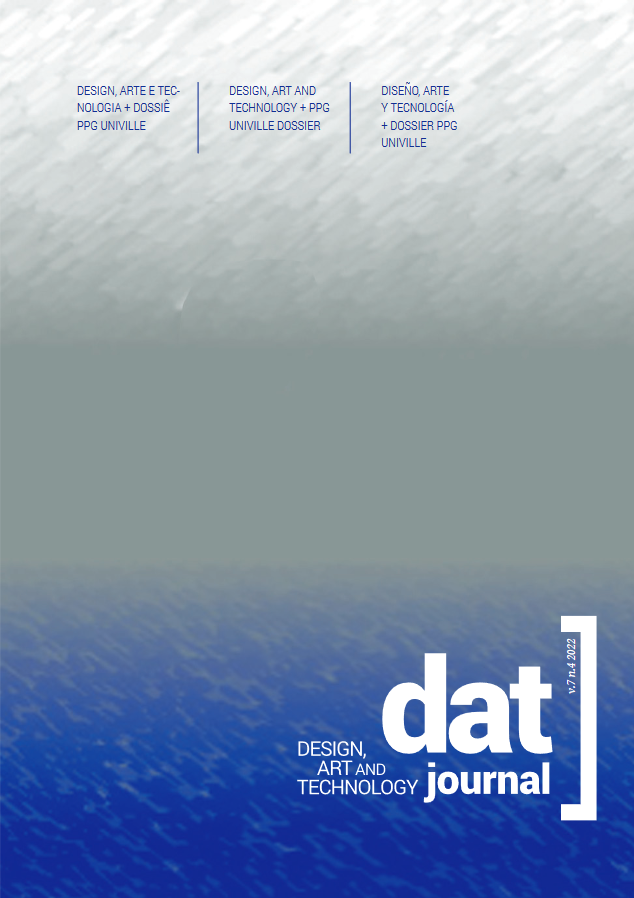Manual Assistance Equipment for Moving and Transferring People in Bed
Keywords:
Reduced mobility, Manual assistance equipment, Elderly, Assistive technologyAbstract
This article presents the applied research carried out in the Master’s in Design at University of the Region of Joinville (Univille). The investigation deals with problems related to people with reduced mobility, highlighting the elderly ones, who represent a growing population in Brazil. The frailty of the elderly often requires the assistance of a caregiver to perform daily activities. Even with several technologies available in the health area, the Brazilian market lacks equipment with affordable costs, safety, and effectiveness. The objective of this article is to present the development of the manual assistance equipment project, whose functions are to provide supported mobility and to help caregivers to move and transfer people with reduced mobility in bed. The methodological approach used was the design thinking. To achieve the goals, bibliographic research was initially carried out on the subject, and a field investigation occurred in two long-stay institutions in the city of Joinville, Santa Catarina, Brazil. Based on this survey and using design tools, we achieved a value proposition that underlies the project carried out.
Downloads
References
ANA (Amarican Nurses Association). Handle With Care Fact Sheet. Disponível em: http://www.nursingworld.org/MainMenuCategories/WorkplaceSafety/Healthy-Work-Environ-ment/SafePatient/Resources/FactSheet.html. Acesso em: 20/06/2015.
ADA (Americans with Disabilities Act). Access To Medical Care For Individuals With Mobility Disabilities, 2010. Disponível em: http://www.ada.gov/medcare_mobility_ta/medcare_ta.htm#additionaltransfer. Acesso em 19/07/2015.
ANVISA. Agência Nacional de Vigilância Sanitária. RDC no 283, de 26 de setembro de 2005. Regulamento técnico para o funcionamento das instituições de longa permanência para ido¬sos. Brasília: ANVISA; 2005.
CHRISTOPHE, Micheline. Instituições de longa permanência para o idoso no Brasil: uma opção de longa duração? Dissertação de Mestrado - Escola Nacional de Ciências Estatístti¬cas. Rio de Janeiro, 2011.
HCD. Kit de Ferramentas. 2 ed: Ideo. Disponível em: http://www.ideo.com/images/uplo-ads/hcd_toolkit/HCD_Portuguese.pdf. Acesso em 15/08/2017.
IBGE. Disponível em: https://agenciadenoticias.ibge.gov.br/agencia-noticias/2012-agencia-de-noticias/noticias/20980-numero-de-idosos-cresce-18-em-5-anos-e-ultrapassa-30-mi¬lhoes-em-2017. Acesso em 20/08/2018.
PLATTNER, Hasso. An Introduction to Design Thinking. Process Guide. Institute of Design at Stanford. Disponível em: https://dschool.stanford.edu/sandbox/groups/designresour¬ces/wiki/36873/attach ments/74b3d/ModeGuideBOOTCAMP2010L.pdf?sessionID=9a5d0a¬2a0cd5fb6 c26a567b2636b19513b76d0f4. Acesso em: 15/05/2015.
MORAES, Ana Maria: SANTA ROSA, José Guilherme. Design Participativo, técnica para inclusão de usuários no processo de ergodesign de interfaces. 1. ed. Rio de Janeiro, 2012.
NELSON, A. L. Patient Care Ergonomics Resource Guide: Safe Patient Handling and Move¬ment. Veterans Adminstration Patient Safety Center of Inquiry, 2001. Revisão: 31/08/2005. Disponível em: http://www.visn8.va.gov/patientsafetycenter/resguide/ErgoGuidePtOne. pdf. Acesso em: Acesso em 19/06/2015.
OSHA (Occupational Safety an Health Administration). Guidelines for Nursing Homes Ergonomics for the Prevention of Musculoskeletal Disorders. U.S. Departamento of labor, 2009. Disponível em: www.osha.gov. Acesso em 19/06/2015.
WHO (World Health Organization). WHO Global Forum of Innovations for Ageing Population, 2013. Disponível em: http://www.who.int/kobe_centre/publications/gfiap_report/en/. Acesso em: 15/06/2015.



























